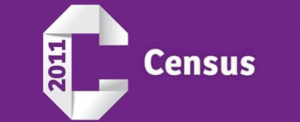Number crunching the language data only tells half the story
Although the Census may be correct in letter, it fails to comprise vital facts on the ground.
“If you talk to a man in a language he understands, that goes to his head. If you talk to him in his own language, it goes to his heart.” – Nelson Mandela
It looks like the Census of 2011 will continue to change perceptions of British national identity as more and more lumps of compiled fact emerge from the numbers.
The latest headlines point to language – specifically Polish – as a sign of the continual inter-culturalisation of the UK. It’s now officially the second most spoken language in the country, with well over half a million speakers, and the news got people talking (again) about the implications of such a development.
While UK Independence Party (UKIP) sympathisers might be suffering uncontrollable bouts of psychotic foaming about losing their supposed heritage, most others accept the fact as a natural consequence of globalisation.
But there’s more to the language discussion than presented by the cold figures: Punjabi, Gujarati and Urdu as well a good number of Bengali and Tamil people also fluently speak and understand Hindustani – the dialect of Bollywood and the language of the South Asian diaspora.
Hindustani is the recognised lingua franca of North India and Pakistan, spoken by several hundred millions of individuals in that geographical area, and implicitly by all northern Indians and Pakistanis in the UK, plus a measurable proportion of Indians from other parts of the subcontinent.
If we add the numbers from the census – 273,000 Punjabi speakers, 213,000 Gujarati and 269,000 Urdu – the perceived linguistic landscape dramatically changes.
Considering that Tamil is spoken both in Sri Lanka and Tamil Nadu and most Indian Tamil speakers also speak Hindustani, as well as at the very least half (likely more) of the 221,000 UK Bengali speakers – it can be safely stated that the real number of Hindustani speakers in Great Britain is somewhere in the neighbourhood of 900,000. A million is too big a psychological threshold and would throw many in denial without backing from a private Census of our own, which costs a good few hundred million quid, though we’d gladly carry it out for a client… So let’s leave it at the plump 900,000 for the time.
That is a staggering 250,000 difference above the official version, making Hindustani the actual second language of the country. ‘United we shall stand’, says a dictum of old, but coming to terms with that idea means you need to ask the right questions.
Perhaps looking beyond the numbers is something that could have been easily done, but showing Hindustani as the second language of Britain instead of Polish would have diverted public attention from the anti-European sentiment making the rounds these days, rendering tonnes of precious electoral juice utterly sour.
Thankfully, we are communication professionals and we get our research from more insightful sources than robotic processing. We thought it a good idea to make our readers and network of contacts aware of the flawed perspective in the widely-publicised data, not just for cultural purposes, but most importantly as a realistic correction. We, and everybody else in this business, have for some time now been using Hindustani as an umbrella language for our South Asian target audience and it works like a charm every time.
Here and Now 365 has always prided itself for promoting multiculturalism and celebrating the ethnic diversity of the UK.
